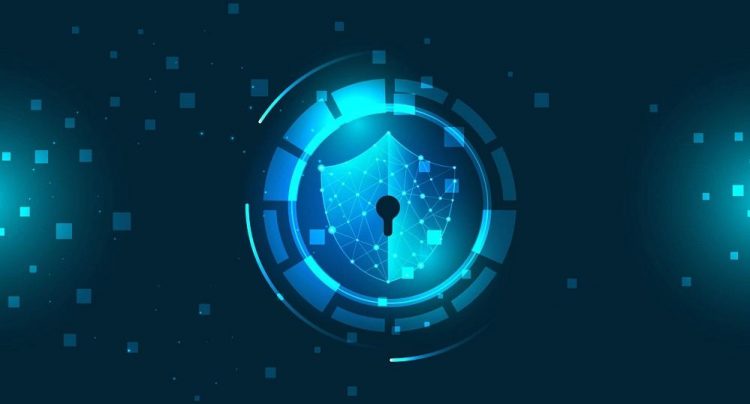The internet has become a crucial part of everyone’s life. It’s no longer an option but an absolute necessity, whether for personal or business purposes. And because of this, security threats and attacks continue to increase each day.
As internet use grows exponentially, businesses and organizations are constantly being assaulted by a wide range of security threats. These include multiple types of malware, which can be shared across devices via internet access.
Most of these threats enable cybercriminals to steal crucial data and use it to conduct more abominable activities like fraud. These cost businesses billions of dollars every year. So, what should you do to prevent such threats? The answer is network security.
Network security is the act of taking measures to safeguard network infrastructures, systems, and devices from unauthorized access, malfunction, destruction, and modification. In this article, you’ll learn everything about network security, from types to tips. So, read on to know them.
Furthermore, if you need help implementing network security, you may go here for New York network support services or other security services in your area.
What Are The Types Of Network Security?
Network security comes in different types, each of which plays a different role. Understanding their purpose can help you create a functional and robust infrastructure and properly assist your employees in using devices and programs. So, what are these types, anyway?
Antivirus And Antimalware Software:
As the name implies, this software program protects devices by detecting and preventing viruses and malware hidden in the system. These include trojans, rootkits, adware, spyware, ransomware, and keyloggers.
Application Security:
This type involves testing the security features of an application. It determines if there’s a need to update or repair to keep the program more secure and protected.
Behavioral Analytics:
This is a tool used to detect and monitor activities within the network. It determines suspicious activities and content that can be considered a threat. It also identifies effective ways to boost network security.
Data Loss Prevention:
This tool helps back up data, including those that have been lost. In addition, it prevents unauthorized users from accessing, destroying, and manipulating sensitive data.
Endpoint Security:
The primary role of endpoint security is to block malicious threats and attacks to prevent them from gaining control over vulnerable devices, such as laptops and desktops.
Network Access Control:
This is a combination of system authentication and endpoint security. Its main role is to enforce network security policies to protect and keep end-user devices secure.
Virtual Private Network:
Popularly known as VPN, this software adds another security barrier that protects one’s browsing activities from the public. This is especially necessary for those who might be using public Wi-Fi.
Firewalls:
A firewall protects network systems by monitoring incoming and outgoing traffic while browsing the internet. It filters user traffic, allowing only the good ones to pass and leaving the bad ones (malicious) out.
Email Security:
Emails are one of the common portals hackers use to access a system or device. Therefore, implementing email security protocols is no longer optional but necessary for all companies sharing large amounts of data via email.
Mobile Device Security:
Since most people use mobile devices like smartphones and tablets whenever they’re free, establishing mobile device security is vital. This type protects your device from attackers who might steal your information.
Web Security:
This ensures that websites and web applications are safe and secure from cybercriminals and malicious threats. It can detect and respond to suspicious activities that can damage the system or device.
Since cyberattacks continue to rise rapidly, it’s ideal to implement multiple forms of network security for your enterprise. They can help create a strong and almost impenetrable network system.
What Are The Common Types Of Network Security Attacks?
In the past few years, cyberattacks have become more rampant than ever. Many experts believe these attacks will continue to become more advanced, destructive, and aggressive in the coming years.
Some of these network security attacks are as follows:
- Social engineering: This manipulative tactic takes advantage of human errors, allowing cybercriminals to access sensitive information. It sets a trap that lures potential victims to expose confidential details and grant permission to access restricted systems.
- Password attacks: This occurs when someone attempts to use someone else’s passwords without permission. It allows hackers to infiltrate one’s account or system and seize any information effortlessly.
- Data theft: Also known as data exfiltration, data theft occurs when a cybercriminal enters a system without permission to acquire any valuable information. These cybercriminals often steal login credentials to seize and extract victims’ finances.
- Malware attacks: These are the most common network security attacks cybercriminals use to infiltrate a system. These occur when a hacker inserts malicious code onto a device. Examples of malware attacks are adware, ransomware, and spyware.
- Insider threats: As its name implies, these are threats that come from the employees of an organization. They use their exclusive company access to infiltrate private networks and obtain crucial information.
Of course, these are only some of the most common ways one can penetrate a network. Cybercriminals continuously develop other techniques to infiltrate a system, so never let your guard down and always pay attention to any suspicious activity you may encounter.
What Are The Challenges In Network Security?
Implementing and maintaining network security is never an easy task, and here’s why:
- Setting up network security can be expensive: Unfortunately, foolproof protection can come at a hefty price, but it depends on the type of network security. So, ensure you evaluate your network system to determine the appropriate network security you need.
- It’s time-consuming: Aside from being expensive, setting up and maintaining efficient and effective network security can be time-consuming. It requires a lot of work, and establishing one may take forever.
- It requires trained staff: This is another reason establishing and monitoring network security can be taxing. Only trained and skilled staff can perform such responsibilities since not everyone is inclined to in-depth technology.
- Assigned personnel can be careless: Nobody’s perfect. The department in charge can make mistakes while maintaining and monitoring network security. It can lead to costly problems if not addressed properly and immediately.
If you want to ease up some of the challenges involving network security, consider hiring a third-party security provider. They already have the expertise and experience in such services and may offer competitive prices.
What Are The Best Practices For Formidable Network Security?
If you want to keep your network security strong and foolproof, consider following these best practices below.
Conduct An Audit:
If you want to improve your network security, you need to pinpoint and evaluate all of its strengths and weaknesses. For that to happen, you’ll need to conduct a thorough network audit.
- A network audit should be able to identify and evaluate the following:
- Data backups
- Overall server and software health
- Open ports
- Unnecessary background applications
- Potential vulnerabilities
- Security software condition (e.g., antivirus and antimalware)
- By conducting a thorough network audit, your IT staff and administrators identify its performance and make necessary improvements.
Prevent File Sharing:
File sharing may be one of the easiest and most convenient ways to distribute documents electronically. However, it’s also one of the common ways to make your system vulnerable to different network attacks.
If that’s the case, it’d be best to prevent file sharing across multiple employee devices. This approach can help keep your network safe from unexpected outside attacks.
Use A Firewall:
Installing firewalls can protect your device by monitoring outgoing and incoming traffic. Not only that, but it can also safeguard sensitive information and prevent it from leaking out. You can also install a web application firewall (WAF) to protect all your data.
Install A VPN:
These days, more and more companies are working remotely and communicating via the internet. It may sound like a great idea, but that only puts them at higher risk of network security issues since sharing files is prevalent. This is where VPN comes in.
With VPN, you can block unnecessary communications, browsing history, data, and activities that hackers can use to infiltrate your system. It encrypts your network to ensure privacy when going online.
Create Strong Passwords:
How do you set up your passwords? Do you make it easy to remember so you wouldn’t have difficulty memorizing them? If so, you might want to change them as soon as possible. Otherwise, you’re putting your network at much greater risk. This is why it’s important to create stronger passwords.
You want your passwords to have at least eight characters, but having more than that is much better. Moreover, consider mixing lowercase and uppercase letters, numbers, and symbols. Try to make it strong yet memorable. If it’s not possible, note it down in case you forget them.
Update Your System:
Cybercriminals continuously develop different ways to bypass advanced network security. The farther they go, the more careful you should be.
Outdated networks and systems are the primary targets of cybercriminals because they don’t possess the advancement that would prevent them from hacking. That’s why it’s crucial to keep your system updated as much as possible. Therefore, contact your provider to ensure you receive regular security updates.
As you can see, there are many ways to keep your network security robust. Ensure to implement them to deter cybercriminals.
Final Words
Network security breaches are rampant these days, causing business losses that can be expensive. Network security can prevent and address these attacks by safeguarding network infrastructures and devices from unauthorized access. Also, pay attention to the earlier tips to ensure consistent and foolproof network security.
Source by justtotaltech.com





















